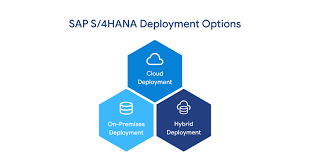Securing efficiency in SAP S/4HANA is essential for businesses looking to optimize their development processes. The Advanced Core Self-Service Developer Model is key to achieving this, enabling developers to streamline solutions while maintaining a clean core.
1. Understanding the Advanced Core Self-Service Developer Model
Roles in the Developer Model
The Advanced Core Self-Service Developer Model organizes development into distinct roles to optimize efficiency. Click here Advanced Developers tackle complex customizations requiring deep expertise, while Core Developers ensure the core system remains stable and aligned with SAP’s best practices. Self-Service Developers leverage low-code tools for quick changes, empowering business users to drive innovation without overwhelming IT teams.
Key Features and Benefits
The model promotes agility by enabling seamless collaboration across teams, thanks to tools like APIs and pre-built templates. Low-code/no-code solutions accelerate delivery, allowing even non-technical users to implement changes. This reduces bottlenecks, minimizes disruption, and ensures rapid alignment with evolving business needs.
2. Leveraging In-App Extensibility for Agile Development
Benefits of In-App Extensibility
In-app extensibility enables immediate, user-friendly adjustments to workflows and dashboards, reducing reliance on IT teams. These changes are applied within the SAP S/4HANA environment, ensuring they’re directly tied to operational needs. Businesses can swiftly adapt to shifting market demands without sacrificing core system integrity.
Best Practices for In-App Customization
To maximize benefits, align customizations with strategic objectives and operational processes. Avoid over-complicating workflows by using standard templates and tools provided by SAP. This ensures compatibility with future updates and simplifies ongoing system maintenance.
3. Maximizing Developer Extensibility for Tailored Solutions
Flexibility with Developer Extensibility
Developer extensibility is ideal for businesses requiring unique, tailored functionalities. By connecting SAP S/4HANA with third-party systems using APIs, developers ensure seamless data exchange. This enhances integration, creating a cohesive ecosystem that addresses specialized business challenges effectively.
Modular Design for Scalability
Breaking solutions into smaller, manageable modules enhances scalability. Modular design simplifies the process of testing and updating customized functionalities, ensuring that these changes don’t disrupt existing workflows while supporting future growth and innovation.
4. Extending Capabilities with Side-by-Side Extensibility
The Role of SAP Business Technology Platform (BTP)
SAP BTP provides a foundation for advanced customizations that remain separate from the SAP S/4HANA core. It supports diverse capabilities, including machine learning and IoT integration, enabling businesses to stay at the forefront of technological advancements without impacting the stability of their primary system.
Advantages of Side-by-Side Extensibility
This approach safeguards system longevity by minimizing direct modifications to the core. Click here It fosters innovation by allowing businesses to experiment with cutting-edge tools and processes. Moreover, side-by-side extensibility ensures that upgrades to the core system remain smooth and conflict-free.
5. Ensuring System Longevity with a Clean Core
Importance of a Clean Core
A clean core is critical for ensuring that your SAP S/4HANA system remains easy to update and maintain. By avoiding unnecessary customizations within the core, businesses reduce operational risks and ensure compatibility with future SAP updates. This creates a foundation for sustained efficiency and growth.
Strategies for Maintaining Clean Code
Focus on leveraging extensibility options such as in-app and side-by-side models to reduce reliance on custom code. Utilize SAP-certified templates and predefined configurations to meet specific needs while ensuring alignment with SAP best practices, thus simplifying future enhancements.
6. Fostering Collaboration and Self-Service Culture
Empowering Developer Teams
Collaboration between Advanced, Core, and Self-Service Developers enhances the overall development process. Shared platforms like Git or other version control systems ensure seamless communication and synchronization, reducing duplication of efforts and improving development outcomes.
Building a Self-Service Culture
Implementing user-friendly tools empowers non-technical employees to independently handle basic configurations, reducing dependency on IT teams. Click here Training programs for employees foster innovation and ensure the smooth adoption of these tools, ultimately improving efficiency across the organization.
7. Monitoring and Optimizing Your SAP S/4HANA Environment
Continuous Performance Monitoring
Regular monitoring of system performance helps identify potential bottlenecks or inefficiencies before they escalate. Leveraging SAP’s analytics tools provides valuable insights into system usage, helping teams optimize processes and maintain high availability.
Staying Updated with Innovations
Periodic evaluations of system integrations and new SAP features are vital for maintaining an edge in a competitive market. By proactively adopting updates and enhancements, businesses ensure that their SAP S/4HANA environment continues to align with emerging industry trends and best practices.


